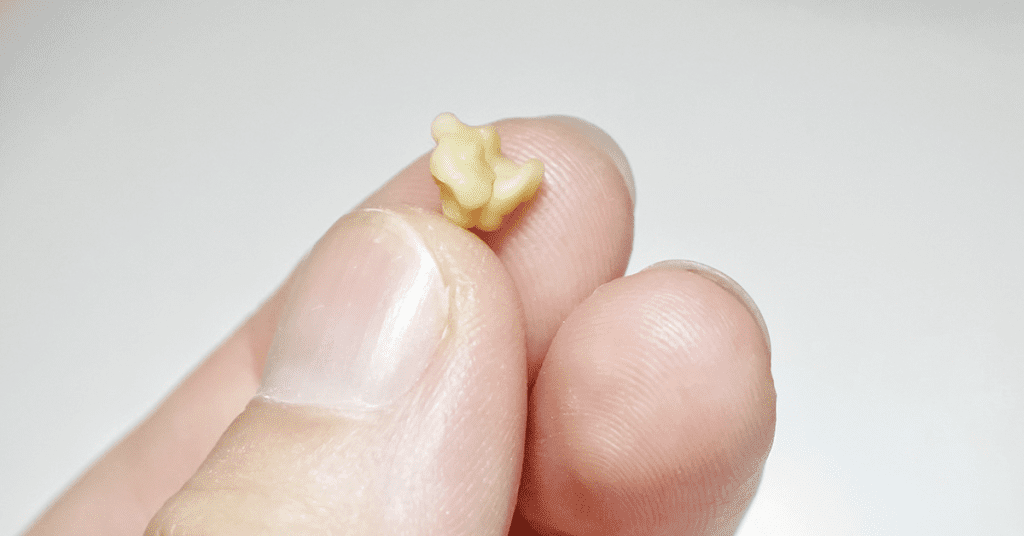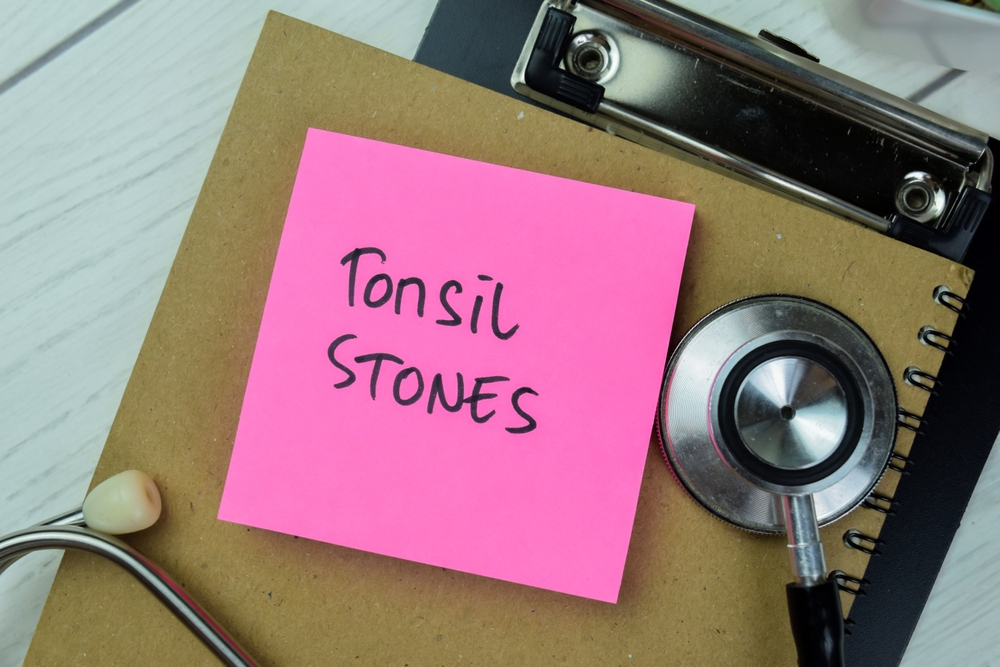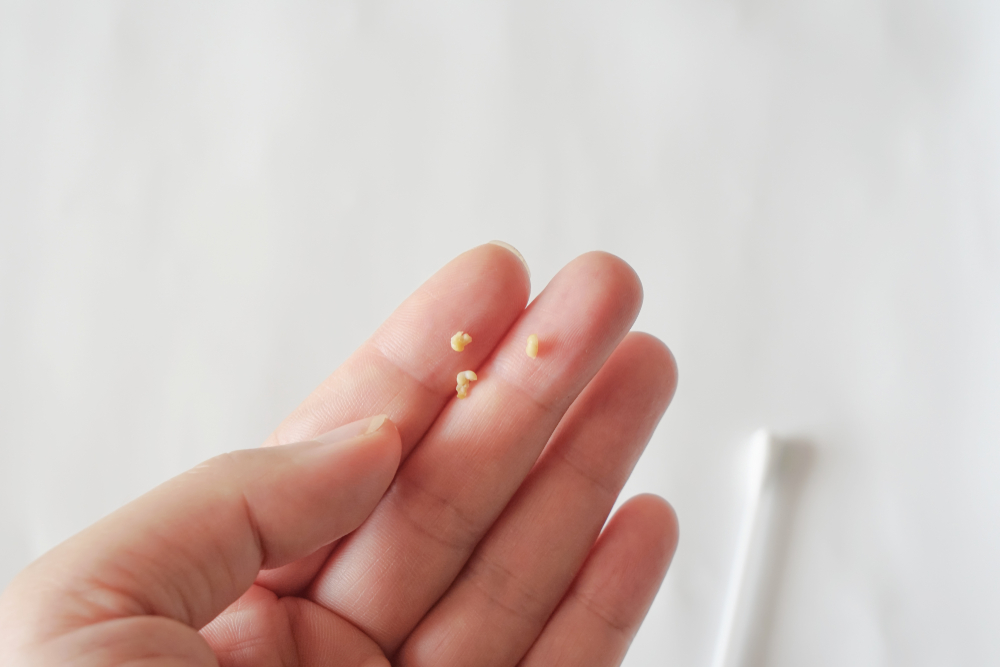Let’s be honest, tonsil stones are not the most glamorous topic of conversation. In fact, the mere mention of these small, whitish-yellow growths that lurk in the depths of our tonsils can be enough to make some people squirm. But the truth is, these pesky little buggers are more common than you might think, affecting children and adults alike.

While tonsil stones may not be a severe health threat, they can certainly be a source of discomfort, embarrassment, and, let’s not forget, that dreaded halitosis (bad breath). But fear not, my friends! Today, we’re going to dive deep into the world of tonsil stones, uncover the facts, and equip you with the knowledge and tools to tackle this peculiar condition head-on.
What Are Tonsil Stones, Anyway?
Tonsil stones, also known as tonsilloliths, are small, pimple-like formations that can develop in the crevices and crypts of your tonsils. These tiny (and sometimes not-so-tiny) stones are formed when food particles, dead cells, and bacteria become trapped in the tonsils and harden over time.
Tonsil stones are most commonly found in children and young adults, but they can also occur in older individuals. While they may not pose a serious health threat, these unwelcome guests can cause a range of unpleasant symptoms, from sore throats and difficulty swallowing to the dreaded bad breath that can haunt even the most diligent of us.
Identifying the Symptoms of Tonsil Stones
So, how can you tell if you’ve got tonsil stones lurking in your throat? The most common symptoms include:
- Persistent bad breath (halitosis)
- Sore throat or difficulty swallowing
- A metallic taste in the mouth
- Swollen tonsils
- Ear pain or pressure
- Persistent coughing
- Tonsil infections or tonsillitis

Source: YouTube
If you’re experiencing any of these unpleasant symptoms, it’s important to consult with a healthcare professional for a proper diagnosis. They’ll be able to take a closer look at your tonsils and confirm the presence of those pesky tonsil stones.
Diagnosing and Treating Tonsil Stones
Diagnosing tonsil stones is usually a straightforward process. Your healthcare provider will likely perform a physical examination of your throat and review your medical history. They may also recommend additional tests, such as imaging studies or a throat culture, to rule out other potential conditions and confirm the presence of tonsil stones.
As for treatment, the options can vary depending on the severity of your case. If the tonsil stones are small and not causing any significant discomfort, your provider may recommend a “wait and see” approach, as the stones may even come out on their own. However, if the stones are larger or causing persistent symptoms, they may suggest one of the following treatment options:

Source: Shutterstock
- Self-removal: You can try gently removing the stones at home using a cotton swab or by gargling with salt water to dislodge them. Just be sure to avoid using anything sharp or pointy, as you could end up doing more harm than good.
- Medicated gargles: Antimicrobial mouthwashes or gargles may help reduce the build-up of bacteria and prevent the development of new tonsil stones.
- Oral irrigators: These handy devices can be used to flush out the tonsil crypts and remove any trapped debris.
- Surgical removal: In severe cases, where tonsil stones are causing recurrent infections or significant discomfort, your doctor may recommend a tonsillectomy, which involves removing the tonsils.
Preventing the Pesky Tonsil Stone Invaders
While we can’t always completely prevent the formation of tonsil stones, there are some proactive steps you can take to minimize their occurrence:
- Maintain good oral hygiene: Brushing, flossing, and using mouthwash can help control the bacteria in your mouth and reduce the build-up of debris in your tonsils.
- Stay hydrated: Drinking plenty of water throughout the day can help prevent dry mouth, which can contribute to tonsil stone formation.
- Avoid tobacco and alcohol: Smoking and excessive alcohol consumption can irritate the tonsils and create an environment ripe for tonsil stone growth.
- Visit your dentist regularly: Routine dental check-ups can help detect any early signs of tonsil stone formation and provide guidance on preventive measures.

Source: Shutterstock
Embracing the Tonsil Stone-Free Life
Tonsil stones may be a peculiar and sometimes embarrassing condition, but with the right knowledge and a proactive approach, you can take control and reclaim your fresh-smelling, tonsil stone-free life. By understanding the causes, symptoms, and treatment options, you’ll be equipped to tackle this pesky problem head-on.
Remember, you don’t have to suffer in silence. If you’re experiencing persistent symptoms or are concerned about the state of your tonsils, don’t hesitate to speak with a healthcare professional. They can provide the guidance and support you need to get to the root of the issue and find the relief you deserve.
So, let’s bid farewell to the days of discomfort and bad breath, and embrace a future where tonsil stones are a thing of the past. Your throat, and your loved ones, will thank you for it!


